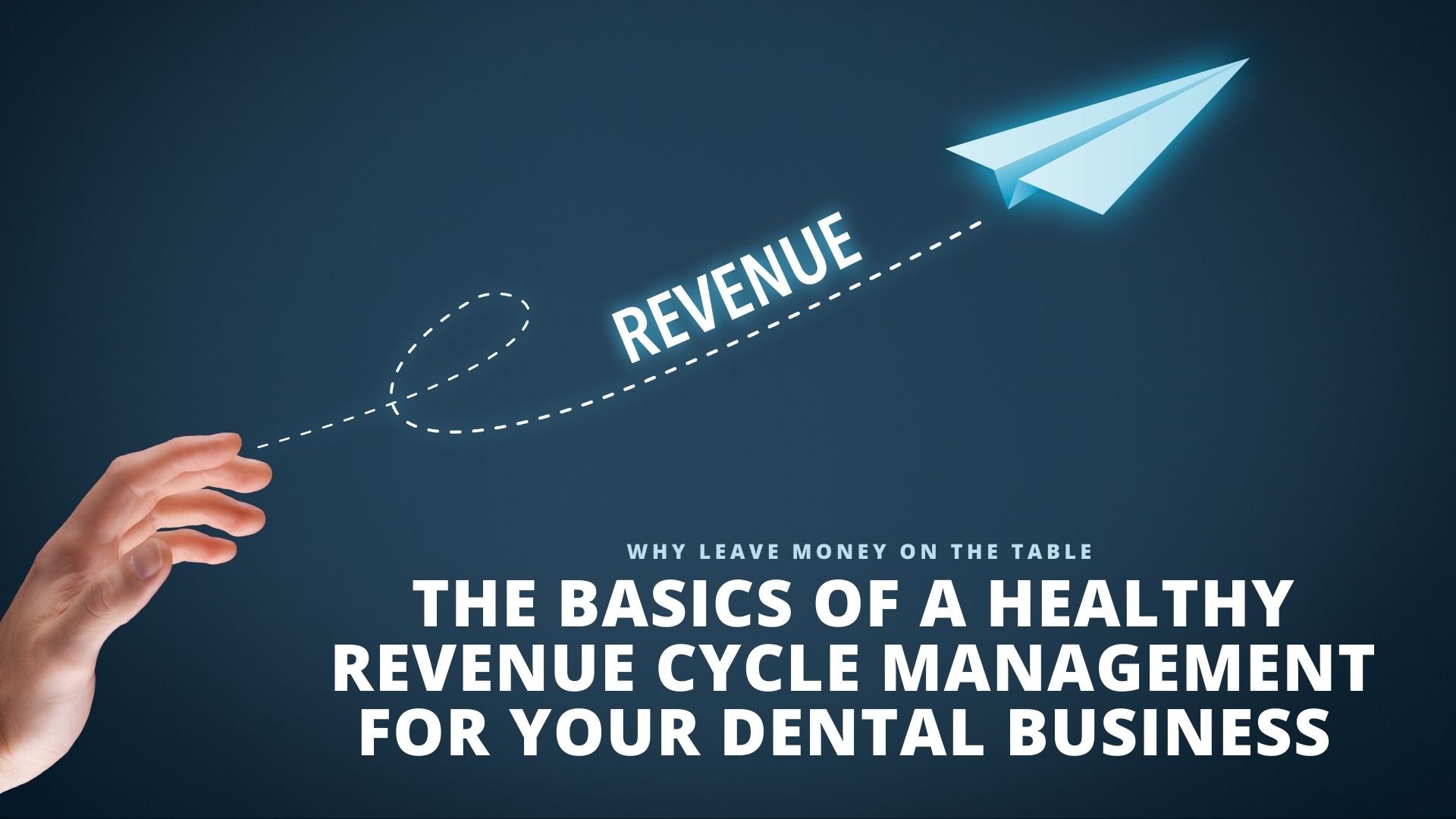Think about those two distinct areas of management you’re juggling in your dental practice. One involves patient care and the patient experience. The other is operational – including the all-important revenue cycle management (RCM).
The RCM zone has a variety of layers that include:
- The pace of patient payments for services
- Claims submission
- Reimbursements from insurance providers
Each of these requires consistent monitoring and an intentional strategy to assure successful RCM in your dental practice or DSO.
Why leave money on the table
Think of RCM as you would any other essential workflow within your practice or organization. To clarify, it’s a necessary synergy between the business of dentistry and clinical care.
The business of fees, claims submission, collections, AR (Accounts Receivables), and treatment coding should be in alignment with your clinical care standards.
Apply best practices or you could experience a dip in your revenue stream. Check yourself against these common businesses of dentistry “fails” associated with RCM:
- Failure to check a patient’s insurance to verify coverage before any procedures
- Failure to collect copays the day of the appointment
- Failure to collect outstanding balances after insurance payments are made to the account
- Incorrect coding and/or not staying on top of coding changes
- Not following up on insurance denials in a timely manner
A healthy RCM strategy enables you to rebound. And when you do, it’s likely you’re doing a few things right.
- Verifying patient eligibility ahead of treatment
- Submitting claims on time
- Following up on outstanding payments and reimbursements
- Monitoring your financials
- Staying in compliance with all applicable program regulations (e.g. Medicare, Medicaid, etc)
Apply the basics of a healthy RCM process in your dental practice or DSO
Even though there’s nothing “small” about your dental practice or dental organization’s revenue cycle – it’s the “little” things that make a difference. Attention to detail at a foundational level will keep you on track.
A healthy RCM workflow involves three fundamental questions.
1-Who is your patient?
That might seem too elementary. But think about it.
Each piece of patient information gives you essential data for RCM. The essentials include;
- Patient name
- Patient demographics such as age, etc
- Patient insurance data
For example, accurate insurance information – including verification of benefits and eligibility – can help you avoid billing and reimbursement issues.
As your business team gets acquainted with a patient, train them to clearly communicate financial expectations. It’s vital that each patient is clear on their responsibility for copays, payments, and taking care of unpaid balances.
2-What has changed since the patient’s previous visit?
The space between their last appointment and their current one could involve a few changes. Those changes might have a direct impact on your revenue cycle (if you’re on-point related).
Ask this standard question: “Are there any changes to your insurance coverage we should know about?” Though it might sound redundant, treat verification as an ongoing process.
- Expect changes and be prepared to verify them if necessary
- Anticipate the need to refresh the “responsibility” conversation. Remind your patients about copays, payments, and service fees.
- Assume they could use some assistance on a payment schedule.
3-How will you bill the insurance provider and the patient?
Of course, some patients are capable of paying in full. But it’s likely that for most you will submit treatment charges to their insurance company – billing the patient for the balance.
Coding is key here. Accurate procedure codes help keep everything moving in a timely direction.
Delayed payments are the enemy of your RCM process. Claims resubmission takes time and eats into your cash flow.
- Bill on time and you’ll increase the likelihood that you’ll collect on time
- Automate your billing procedures. Electronic billing systems can narrow the gap between submission and reimbursement.
- Follow a collection routine. The 90-to-120-day timeline is standard.
And keep an eye on your overhead
General operations costs (e.g. staff, facilities, utilities, maintenance, and supplies) can demand a “chunk” of your revenue stream. A healthy RCM process serves your operational capabilities.
- Stay vigilant about your operational costs
- Track and monitor your data
And about your data analysis…
Check out the following resources aligned with a healthy RCM system:
The Importance Of Dental Data Analytics For Achieving Operational Excellence
6 Actions That Can Increase Dental Practice Production
Use data analytics and make more informed RCM decisions
The Jarvis Analytics platform helps assure that you’re tracking the important metrics and staying on track in your daily workflows and overall practice or DSO goals.
Jarvis…
- Integrates seamlessly with your chosen practice management software/platform
- Presents the metrics you want and need in an easy-to-view dental dashboard that reduces data complexity for growing dental practices, dental groups, and DSOs
Experience Jarvis in action. Request a demo today!
Or…
Contact us for more information about data tracking that leads to profitability.
LIKE WHAT YOU SEE & READ?
Join thousands of other people, subscribe to our newsletter, and get valuable business tips delivered right to your inbox.


